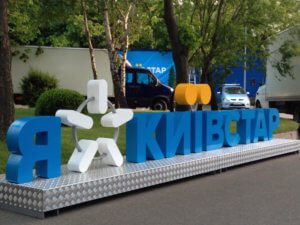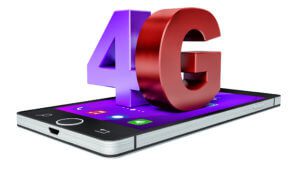
The mobile communications operator lifecell in 2018 saw UAH 1.301 billion in net loss, which is 2.58 times more than in 2017 (the loss of UAH 503.6 million), according to financial statements of its parent company Turkcell (Turkey) posted on its official website.
Revenue of the operator grew by 8.06%, to UAH 5.269 billion.
Earnings before interest, taxes, depreciation and amortization (EBITDA) rose by 8.2%, to UAH 2.762 billion, and EBITDA margin increased 25.2 percentage points, to 52.4%.
Capital investment of the operator in 2018 tripled, to UAH 4.032 billion, while in 2017 the operator invested UAH 1.33 billion.
The active subscribers’ base last year narrowed by 8.8%, to 7.3 million clients, and total number of subscribers in the network of the operator decreased 10.8%, to 9.9 million. Average revenue per user (ARPU) grew by 26.6%, to UAH 42.80, and ARPU of the active clients’ base rose by 20.1%, to UAH 57.30.
The number of minutes used by subscribers for voice data transfer grew by 12% in 2018, to 144.9 minutes.
Saturation of smartphones in the lifecell network as of late Q4 2018 reached 75.9%.
In the fourth quarter of 2018, the net loss of lifecell increased 4.07 times and amounted to UAH 730.1 million, while revenue grew by 11.6% to UAH 1.417 billion.
EBITDA increased by 3.37 times, to UAH 1.084 billion, while EBITDA margin rose by 50.4 percentage points, to 76.5%.
Capital investments in the last quarter of 2018 amounted to UAH 933.3 million, which is 2.25 times more than in the same period of 2017.
The Turkish company said that EBITDA growth was thanks to effective cost control measures, as well as the positive impact of the new IFRS standards.
At the same time, the company continues saying that the outflow of the subscriber base is mainly due to the general trend of reducing the use of SIM-cards in the country.
In addition, the operator reported on the increase in the number of active 4.5G Internet users (lifecell) for three months to 33% of the total number of mobile data users, and also that lifecell was the first in the Ukrainian market to deploy the NB-IoT network for smart devices.
As reported, in 2018, lifecell saw net loss of UAH 503.6 million compared to UAH 928.3 million of net profit in 2016, while the operator’s EBITDA in 2017 decreased by 2.2%, to UAH 1.326 billion.
Lifecell is the third largest mobile operator in Ukraine.

The Kyivstar mobile communications operator has launched the Mobile ID service, allowing the digital identification of persons for obtaining e-services using the mobile number. According to a press release of the operator, the service is available in Kyiv, Dnipro, Ivano-Frankivsk, Odesa, Kharkiv, Kherson, Vinnytsia, Khmelnytsky, Lviv, Zhytomyr and Cherkasy. In total, these cities have 22 open points for issuing Mobile ID SIM-cards and certificates from the accredited key certification center of justice authorities. They can be received by individual entrepreneurs, contract subscribers and corporate clients of Kyivstar from any locality of Ukraine.
“Now we are focusing our efforts on connecting the cities, which are regional centers. We have already covered 11 cities. In the beginning of 2019, we will announce the opening of new locations. And we will move further “deep countryside” to make Mobile ID connection available in small cities,” the press service of the operator said, citing Director for Business Development in the Corporate Market in Kyivstar Yevhen Krazhan.
The operator said that the project was implemented in partnership with the accredited key certification center of the judicial authorities, which is an authorized provider of electronic trust services. All points, where Mobile-ID SIM-cards are issued, have been duly certified, as well as the staff responsible for connecting the service to users.
According to Kyivstar, the large-scale implementation of Mobile ID will simplify the provision of services to the population by government and commercial institutions, eliminating the intermediary link between the source of services and the customer and, thus, reducing excessive red tape, queues and costs.
The Mobile ID service can be used to obtain electronic public services (driver’s license, car registration, residence registration, income declaration, voting and petitions, receiving social assistance); health care (medication, access to the history of the disease, monitoring indicators) and education (access to the website of the educational institution and personal account, distance education, receiving certificates, extracts). It can also be used for the financial and banking sectors (payments, opening/closing accounts, receiving references, insurance, loans); corporate market (login, workflow, VPN, mobility), for online purchases, auctions and other services.
To connect to the Mobile ID, a subscriber needs to contact the certified connection point with the original passport and identification code and replace the SIM card with a new having Mobile ID support for free.
In this case, the subscriber receives a free digital certificate of a natural or legal person for a period of one year. The cost of using the Mobile ID service is already included in the tariff plans with a monthly fee of UAH 225 per month, for other tariff plans it is UAH 50 per month.
The operator invites service providers to cooperate to jointly expand the online services available to the public.

The mobile communications operator Kyivstar in April-June 2018 saw an 11.4% rise in revenue year-over-year, to UAH 4.521 billion, the Veon international group (VimpelCom Ltd. before rebranding) has said in a quarterly report on Thursday. According to the report, over the period Kyivstar increased earnings before interest, taxes, depreciation and amortization (EBITDA) by 8%, to UAH 2.49 billion, EBITDA margin fell by 1.7 percentage points (p.p.), to 55.1%. Revenue from mobile communications services in Q2 2018 came to UAH 4.2 billion, which is 11.4% more than a year ago.
The press service of Kyivstar reported that data consumption in April-June 2018 grew by 139% year-over-year, to 1.8 gigabytes per user on average. Voice service consumption remained stable: in Q2 2018 on average 580 minutes per user was recorded, which is 1.2% more than a year ago. The number of mobile Internet users over the period grew by 21% year-over-year, to 13.5 million, and the total number of active users totaled 26.5 million, which is 400,000 more than a year ago.
“The growth in the consumption of services, the increase in the number of users, the launch of new communication technologies are just a few qualitative changes that have positively affected our financial performance in the second quarter of 2018,” acting Kyivstar president Oleksandr Komarov said in a report. The minutes of use (MoU) increased by 1.2%, to 580 minutes, and ARPU (average revenue per user per month) of mobile communication increased by 9.6%, to UAH 52.
The revenues of the mobile operator from fixed-line services in the second quarter increased by 7.3% to UAH 297 million, including revenues from fixed-line Internet that increased by 8.5% to UAH 185 million, while the number of users increased by 6.5% %, to 0.858 million. ARPU for fixed-line Internet grew by 4.3%, to UAH 72.
Capital investments, with the exception of payment for licenses, for the reporting period amounted to UAH 927 million, which is 31.5% more than in the same period last year. At the end of the second quarter of 2018, the “3G Kyivstar” service was available in the territory where 74% of Ukrainians live. Kyivstar said that in the first half of the year its revenues increased by 10.8% compared to the same period in 2017, to UAH 8.785 billion, while EBITDA increased by 12%, to UAH 4.902 billion.
At the same time, revenues from mobile services for six months increased by 11.2% to UAH 8.149 billion, and from fixed-line telephony – by 3.6%, to UAH 593 million.
In the second quarter of 2018, Kyivstar transferred almost UAH 4 billion of taxes, fees and payments for licenses to the Ukrainian budget, and for the first half of the year the amount of all payments to the national budget reached UAH 6.8 billion. Kyivstar is the largest Ukrainian mobile communications operator.

The three largest Ukrainian mobile communications operators have received licenses authorizing them to implement 4G technology (LTE) in the 1800 MHz band. According to reports of the operators, the National Commission for Communications and Informatization Regulation (NCCR) on April 12, 2018 issued licenses for the use of radio frequency spectrum in the 1800 MHz band to launch 4G communications from July 1, 2018.
Kyivstar, Vodafone Ukraine and lifecell won lots at a tender, according to the right of first refusal. The three companies bought lots of 25 MHz, 20 MHz and 15 MHz for UAH 1.325 billion, UAH 1.06 billion and UAH 795 million respectively. In addition, Kyivstar bought the fourth and sixth lots for UAH 612 million and UAH 900 million. Vodafone Ukraine bought the fifth lot for UAH 742 million.
As reported, the three operators after the tender held early March paid UAH 5.434 billion for 75 MHz in the 1800 MHz band for the right to deploy 4G communications standard. Earlier the companies paid UAH 2.456 billion for 40 MHz in the 2600 MHz band after a tender held at the end of January 2018 for the introduction of 4G. Then lifecell bought two lots for 15 MHz for UAH 909.25 million, Kyivstar – three lots for 15 MHz for UAH 916.3 million and Vodafone Ukraine – two lots for 10 MHz for UAH 631 million.
The operators plan to launch 4G in the 1800 MHz band in July 2018.

Kyivstar mobile operator plans to launch 4G communications in the 2600 MHz range by April 10 of this year, company president Peter Chernyshov has said.
“Friends, you know that Kyivstar is a law-abiding company. We are waiting for all the necessary permits and conducting additional network settings in connection with the new requirements of controlling state bodies. All is made in order to launch high-quality 4G from Kyivstar. It is important for us that our subscribers get a positive experience of using the service. Quickly does not always mean qualitatively. We plan to launch 4G by April 10,” he wrote on his Facebook page.
As reported, Vodafone Ukraine mobile operator plans from March 30 to April 2 to launch 4G communications in the 2600 MHz band in 20 cities of Ukraine.